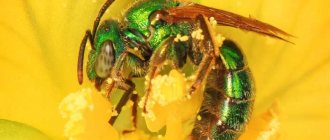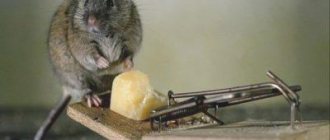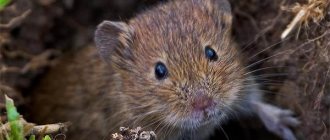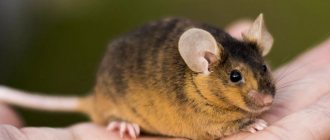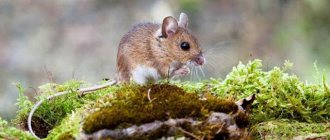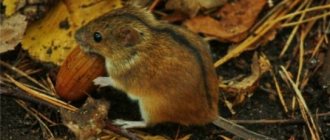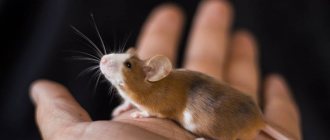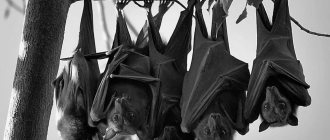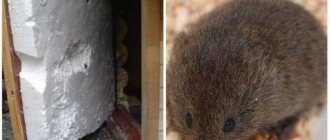Rodents are the most numerous order among all mammals: they account for more than 42% of species. Representatives of the order are present literally everywhere - from the Arctic tundra, where they live and breed under the snow (for example, lemmings), to hot and dry deserts (gerbils). Some glide through the air from tree to tree (flying squirrels), only occasionally descending to the ground, while others, on the contrary, spend their entire lives in the labyrinths of underground passages (mole rats). Some have webbed feet and are semi-aquatic (muskrats), often constructing complex engineering structures to regulate water levels (beavers), while others do not know what water is at all (gundi).
Description, appearance and reproduction
Mice are mammals . They belong to the order of rodents, the mouse family. Their body length rarely exceeds 10 cm , weight varies from 15 to 45-50 grams. The coat can be of different colors (depending on the breed).
The tail is covered with short hairs, its length is usually equal to the length of the body. The muzzle of the mice has the shape of a triangle , the ears are large and round, sticking out to the sides. The eyes are usually black (albinos have red eyes).
HELP: Mice reproduce very quickly. They reach sexual maturity by 2 months, and in one year they bring up to 10 litters, in each of which up to 8 pups are born. Pregnancy in these animals lasts 3 weeks.
Mice are born naked and blind, and their first fur grows only a week after birth. After 2-3 weeks they are completely independent.
In summer, mice reproduce more actively , since this process is influenced by the amount of available food.
Taxonomy
- Squirrel: 1—common squirrel; 2—thin-toed ground squirrel; 3—chipmunk; 4—speckled ground squirrel; 5—Mexican prairie dog; 6—Menzbier's marmot.
- Flying squirrels: 7—flying squirrel.
- Gopheraceae: 8—plain gopher.
- Beavers: 9—beaver.
- Long-legged: 10—long-legged.
- Hamsters: 11—common hamster; 12—Djungarian hamster; 13—ordinary zokor; 14—common vole; 15—hoofed lemming; 16—Siberian lemming; 17—water vole; 18—common mole vole; 19—large gerbil.
- Mole rats: 20—common mole rat.
- Mouse: 21—tiny mouse; 22—pasyuk.
- Dormouse: 23—garden dormouse.
- Seleviniaceae: 24—selevinia.
- Mousebirds: 25—wood mouse.
- Jerboa: 26—fat-tailed jerboa; 27—large jerboa.
- Porcupines: 28—Indian porcupine.
- Amer. porcupines: 29—grain-tailed porcupine.
- Guinea pigs: 30—guinea pig; 31—Patagonian mara.
- Capybara: 32—capybara.
- Chinchillas: 33—chinchilla; 34—viscacha.
- Nutriaceae: 35—nutria.
The taxonomy of the order, due to the large number and diversity of its representatives, sometimes having convergent characters, is very difficult and complex.
Until now, there is no consensus among experts even regarding large taxonomic categories (suborders, superfamilies). Order Rodentia (Bowdich, 1821)
is divided into 6 suborders and includes about 1600 species and 29 families.
- suborder Spiked-tailed (Anomaluromorpha) (Bugge, 1974)
family Spiked-tailed (Anomaluridae) (Gervais, 1849) + - family Pedetidae (Gray, 1825) +
suborder Beavers (Castorimorpha) (AE Wood, 1955)
- Beaver family (Castoridae) (Hemprich, 1820) +
family Gopheridae (Geomyidae) (Bonaparte, 1845) + family Pouchhopper (Heteromyidae) (Gray, 1868) +
suborder Porcupines (Hystricognatha) Woods, 1976
- infraorder Porcupines Hystricognathi Brandt, 1855 family Abrocomidae (Miller and Gidley, 1918) +
family Bathyergidae (Waterhouse, 1841) + family Capromyidae (Smith, 1842) + family Caviidae (Fischer de Waldheim, 1817) + family Chinchilladae (Bennett, 1833) + family Tuco-tucaceae (Ctenomyidae) (Lesson, 1842) + family Cuniculidae (Miller & Gidley, 1918) + family Agutiaceae (Dasyproctidae) (Bonaparte, 1838) + family Laotian mountain rats (Diatomyidae) (Mein & Ginsburg 1997) + family Pacaranaceae ( DINOMYIDAE (Peters, 1873) + Family bristly rats (Echimyidae) (Gray, 1825) + Fine is wooden -rocket (Erethizontidae) (Bonaparte, 1845) + Semizubovaya family (Heptaxodontidae) (Anthony, 1917) + Family + Family + Family + Family + Family + Family + Family + Family + Family + Family + Family + Family Zvoil (Hystricidae) (Fischer de Waldheim, 1817) + Nutria family (Myocastoridae) (Ameghino, 1902) + Octodontidae family (Waterhouse, 1840) + Rock rat family (Petromuridae) (Tullberg, 1899) + Thryonomyidae family (Pocock, 1922) +
suborder Myomorpha (Brandt, 1855)
- family Jerboa (Dipodidae) (G. Fischer, 1817) +
family Mouse (Muridae) (Illiger, 1815) + family Dormouse (Myoxidae) (Gray, 1821) +
suborder Comb-mouse-like (Sciuravida)
- family Gundiaceae Ctenodactylidae Gervais, 1853 +
suborder Squirrel-like (Sciuromorpha) (Brandt, 1855)
- family Aplodontiidae (Brandt, 1855) +
squirrel family (Sciuridae) (Fischer de Waldheim, 1817) +
What types are most common?
approximately 300 species of wood and field mice worldwide . Most of them are found in warm countries (Africa and Asia); fewer species live in Australia and Eurasia. Here are the births that occur in a person’s life:
- wood mouse;
- harvest mouse;
- house mouse;
- mole vole;
- yellow variegation;
- steppe moth;
- voles: underground, dark, flat-skulled, narrow-skulled, Brazilian;
- red and bank voles;
- housekeeper voles;
- gray vole;
- earth rat.
Animals of the Moscow region
Today, the Moscow region is home to about 60 species of mammals, 20 species of reptiles and amphibians, up to 40 species of fish and about 200 species of birds. Some species are well-known and very common, others are slightly less common or considered very rare. But the fauna of this area includes a large number of different species of animals.
Animals of the Moscow region in taiga areas are widely represented by hares, squirrels, wood grouse, hazel grouse, blackbirds, etc. In numerous broad-leaved and mixed forests you can see roe deer, wild boars, pine martens, minks, black ferrets, foxes, moose, badgers, moles, several species dormouse, green woodpeckers, blackbirds and many others. etc. Here are some animals of the Moscow region that should be studied in more detail.
The common squirrel is a typical representative among the animals of the Moscow region. Now it can be seen not only in the forest, but also in the city. She has adapted perfectly to life in parks and crowded places and does not at all take into account the close presence of people. The common squirrel can be found in the forests of northern Asia, Europe and America. The squirrel climbs trees beautifully and deftly jumps from one tree to another. Sometimes it happens that she jumps from the top of a 30-meter tree to the ground, without any harm to herself. She achieves such agility thanks to her long hind limbs, which can be compared to a spring. This allows the animal to jump from a place to a distance of 10 m. Squirrels feed mainly on plant foods, but also feast on insects, eggs of birds, lizards, and snakes. Sometimes they eat small chicks, small rodents and lizards.
This is interesting. The common squirrel is very sensitive to cold. In severe frosts, she sleeps curled up in a ring, covered with her fluffy tail. She covers the entrance hole of the house with moss. Even when the temperature outside drops to -20˚, in the warm squirrel's nest the temperature is always above 0˚.
When studying the animals of the Moscow region, one cannot help but pay attention to the hedgehog. The European or common hedgehog prefers bushes, copses and forest edges. It is difficult to confuse it with another animal due to the numerous spines that cover almost the entire body. Its body length is 25-35 cm, weight 800 g, tail length 3 cm. When in danger, the hedgehog curls up into a ball, reliably hiding its neck, muzzle and abdomen. Even an adult (wearing gloves) cannot unfold it, since the animal strains its powerful muscles. Curled up into a ball, the hedgehog feels safe under the covering of sharp needles. But not all enemies can protect an animal in this way. For example, a cunning fox rolls a hedgehog into the water, where it is immediately forced to turn around. The main part of a hedgehog's diet consists of insects, which it eats in large quantities. Since the animal needs to accumulate a sufficient amount of fat for hibernation.
This is interesting. It has been proven that there are about 15 spines per 1 cm² of a hedgehog, and up to 8 thousand on the entire body. Molting in these animals occurs very slowly. During the year, only a small number of needles are renewed in different places.
The wild pig, or wild boar, is found in forests interspersed with lawns, meadows and swamps. It can often be seen in the bushes around rivers. A wild pig is a relatively peaceful animal, but when enraged or wounded, it becomes very dangerous and skillfully uses its formidable weapon - sharp fangs. It is very difficult to get close to a wild boar unnoticed, because their sense of smell is well developed. Downwind, they can smell a scent 500 m away. Male wild boars, called cleavers, lead a solitary lifestyle. During the mating season, fierce fights arise between them for the attention of females. Only a strong and healthy male becomes the successor of the family. He surrounds himself with 2-6 females at a time.
This is interesting. Boars willingly take mud baths, which save them from the heat and annoying insects. When the dirt on their skin dries, the animals begin to rub against the trees to cleanse themselves of dirt and dried insects.
White hares live almost throughout the entire territory of the Moscow region . The length of the body and head of these animals ranges from 43 to 63 cm, the length of the tail is 4-8 cm, and the weight is from 2 to 6 kg. The color of this hare changes with the seasons and includes 3 molting periods. Males and females tend to be similar in appearance, but females are slightly heavier. The diet of the white hare varies according to the time of year. In summer, they mainly consume leaves, twigs and various plants, and in winter they feed on heather. Life expectancy in the wild averages 9 years.
This is interesting. The white hare is a very careful animal. Even in a seemingly hopeless situation, he acts quickly and intelligently. If necessary, can run at speeds of up to 65 km/h.
When considering the animals of the Moscow region, you must definitely remember the giant from the deer family - elk . Its body length is 3 m, height at the withers is 2.5 m, weight is from 300 to 600 kg. In summer, moose feed mainly on succulent grass plants. They love to lie in the shallows, sometimes they go into the water up to their necks and stand there for hours. This way they save themselves not only from the heat, but also from the merciless bites of midges and mosquitoes.
This is interesting. An elk is capable of killing not only a person, but also a bear with one blow of its forelimbs.
The animals of the Moscow region are not only big moose or cute squirrels, but also a variety of amphibians. For example, lake frogs, often called green frogs, are very common in the area. The lake frog has well-developed vision, smell and hearing. During the day you can see the animal resting, basking in the sun, and casually flicking out its sticky tongue when an insect, its favorite prey, flies nearby. During the mating season, in the evenings, toads gather large, producing melodious trills. Lake frogs overwinter at the bottom of deep reservoirs or near a source. They accumulate under overhanging shores, or hide in underwater vegetation.
This is interesting. If the mucus that covers the frog is wiped off, the animal loses water right before our eyes and dries out five times faster.
is quite rare among the animals of the Moscow region . He prefers forest gullies, river valleys, hills, dry sandy soil, where it is convenient for the badger to build a multi-tiered hole with numerous entrances and exits. There are up to 50 entrances in his hole. The badger's hole is always clean and dry. The nesting chamber where children grow up is located in a sandy layer under the protection of waterproof clay soil. Although badgers readily feast on both plant and animal foods, their main diet is toads. In just one hunt, a badger can eat more than 60 pieces. It is difficult for other animals to eat a badger. In times of danger, he successfully hides in a hole, digs new passages and at the same time closes the passage behind him with earth.
This is interesting. Hibernation of badgers does not involve deep sleep. During a thaw, they often wake up and even crawl to the surface to bask in the warm sun and stretch their bones and muscles.
Animals of the Moscow region include three species of snakes: the common viper, the common snake and the copperhead (in the south of the region). The body length of the common viper rarely exceeds 60 cm. It leads a sedentary lifestyle and moves within a radius of 50-100 meters. It feeds on small rodents, birds and chicks, toads, and rarely lizards and insects.
Distribution in Russia
In Russia, house mice are most often found . They live in all corners of the country, with the exception of the northeastern part of Siberia, the interfluve of the Lena and Yenisei rivers and mountain forests. Several species of voles live in the European part of Russia.
Baby mice prefer warm climates . Their habitat includes the coasts of the Black and Baltic seas, the Caucasus, Transbaikalia, and the Volga coast. Field mice live in the southern part of Western Siberia and the Caucasus.
Whom to choose?
What rodents live in your home? The question is interesting and there is no clear answer to it. It all depends on your preferences, fears and living conditions.
Pallas' cat and 731 other fauna representatives in the encyclopedia
Rodents are one of the important and very interesting subcategories of our wildlife encyclopedia. Wildlife is extremely diverse, and rodents are an important part of it. The list of animals in the subcategory will be constantly updated with new species. So check back often! Don't forget to follow us on social networks and you will always be the first to know what new animals have appeared in our encyclopedia. Good luck!
Wild animals on social networks
Do you like animals? Go to our second website using the link -> Usatik.Ru
Partial copying is allowed provided that a direct (indexed) link is installed on Wildfauna.ru.
Photo and video materials are the property of their authors and are used for informational purposes only.
Nutrition
The basis of the diet of mice is grain (legumes, cereals) . Many species feed on plants and their seeds, and some catch insects, eat larvae and even carrion. drinks 3-5 ml of liquid per day ; without water they can live up to 2.5 weeks.
An interesting article about the nutrition of the vole mouse on our website.
Animals living next to humans can eat any food available to them : candles, soap, chocolate, milk, dairy products, meat, grain. If there is an abundance of food, mice make reserves.
Mice in the country or in the wild gnaw the bark of trees, eat buds, berries, and young shoots. Some mice gnaw cones and extract nuts from them. In the taiga, animals willingly eat cranberries and lingonberries.
Natural enemies of gray squirrels
Photo: Rodent gray squirrel
This species still does not have many enemies, which explains the rapid population of Europe, like other rodents. They are saved by their speed of movement, sensitive hearing and excellent reaction. You can only catch a squirrel on the ground, where it spends very little time. Most often, she becomes a victim of foxes and wolves, who patiently guard their prey. In the trees it is hunted by martens, wild cats and lynx.
In open areas, it is easy prey for birds of prey: eagle, falcon and kite. A crow or an ordinary domestic cat can steal small squirrels from a nest. Over the course of generations, the gray squirrel has “developed” its survival strategy. For example, running up and down and in spirals makes it very difficult for birds of prey to catch prey. And using thin branches to move, the gray squirrel can easily escape from the marten.
The natural enemies of the gray (Carolina) squirrel in America are:
- coyote;
- gray foxes;
- young wolves;
- eagle;
- golden eagle;
- owls;
- American marten;
- piranha;
- puma;
- goshawks.
As can be seen from the list, more than half of these predators are missing in Europe, which immediately affected the squirrel population. She can easily jump away from her pursuer to a great distance. A healthy and strong animal rarely falls into the teeth of a predator. Usually these are sick, weakened or very young proteins. Squirrels compete with chipmunks, mice, and hares for resources and food. But close to humans, the squirrel has almost no enemies; predators are mainly afraid of people, except cats.
Yellow-necked mouse
These mice became a separate species back in 1894, and in 2008 they were listed in the Red Book of the Moscow Region . Their main difference is the bright red color of the skin . They have a yellow stripe around their neck. The ears of yellow-necked mice are large, round, and the body length reaches 10 cm.
These animals live in the southern part of Russia, but are also found in the north. They are dangerous because they carry various diseases (the most dangerous is tick-borne encephalitis). These mice live in forests, occupy hollows and nests , and sometimes dig holes in the roots of trees. He prefers seeds from food (acorns, beech, hazelnuts, etc.).
Food
Rodents love seeds, nuts, grains of various cereals, as well as lettuce, spinach, cabbage, clover and dandelion. They also really like dry corn kernels, raisins, apples and carrots. Rodents should never be given sweets, chocolate or sweet cookies! And also lemons, oranges and onions. From time to time you can pamper your pets with crackers, and treat a rat or mouse with a piece of cheese. Be sure to put a branch of a fruit tree or a special mineral block in the cage - rodents will grind down their teeth. The fact is that rodents’ incisors grow throughout their lives. And if they are not ground down, they can grow so long that the animal will not be able to close its mouth and will not be able to eat. The animal will die of hunger, even if there are plenty of treats nearby.
Video
How are farmers harmed?
Mice, like many other rodents, cause a lot of damage to farms. Here's why mice are dangerous:
- mice carry dangerous diseases (typhoid, plague, salmonellosis, etc.);
- they leave their excrement wherever they run and climb (various infections are also transmitted to people through feces);
- chew wires, furniture, walls and other household items;
- Mice are dangerous for the garden: they spoil the harvest (they gnaw the bark of fruit trees and their roots, eat the harvest);
- They eat the feed of farm animals and leave their excrement in it, which leads to food spoilage.
Learn about ways and methods of dealing with mice in the country and at home.
Rodent control
Regardless of what pests have settled in your summer cottage, you need to know how to get rid of rodents in order to obtain and preserve the harvest. To combat all types of rodents, traditional mousetraps, as well as glue-based traps, are used. Glue traps can be purchased ready-made or you can purchase special non-toxic glue to create them, which retains its properties for two weeks. Both ready-made traps and glue for them are produced by the MediLIS company.
If there are a lot of rodents in the country, traps alone will not do. It is better to use poison baits. These can be ready-made baits with an attractive smell and taste for rodents, containing poison. Or an additive for making your own baits. It is mixed, for example, into a boiled egg or added to sugar syrup. The bait and ingredients for its preparation, called Mediret, are also produced and sold by the company MediLIS.
Photo
Read on our website interesting articles about country pests: moles, gophers, hamsters.
At all times, mice lived next to humans and caused damage to the household. In order to protect yourself and your loved ones from diseases and protect property from damage, you should regularly take measures to get rid of these pests.
Lifestyle
A mouse can cause enormous damage to humans. By nature and food preferences, a rodent is a predator. But the pest mainly consumes plant foods and therefore its diet consists of seeds, fruits of trees or shrubs and cereal crops. Mice living in swampy areas, wet or flooded meadows feed on the buds, foliage or flowers of various plants.
Mouse habitat
The strong smell of cheese can repel rodents.
Various breeds of mice, having settled almost throughout the planet, arranging their habitat, can build nests from grass stems, occupy abandoned holes, old hollows, or dig complex underground systems with many passages. Once in a person’s home, rodents settle under the floor, in attics, and between walls. Unlike representatives living in swamps and near water bodies, steppe, mountain and forest mice swim poorly.
The active life of animals coincides with the evening or night time, but they try not to move too far from their home. The mouse has many enemies, these include birds of prey, reptiles, mongooses, foxes, hedgehogs, cats, crows and other representatives of the fauna.
Mice make huge reserves for the winter, but do not hibernate.
Mostly voracious and ubiquitous rodents cause harm, but there is one area of science in which the omnivorous mouse is useful and irreplaceable. These are special scientific and medical laboratories where animals become experimental subjects. Thanks to these small animals, many important discoveries were made in genetics, pharmacology, physiology and other sciences. Surprisingly, 80% of the genes endowed with a living mouse are similar to human structures.
Family Mole rats
Mole rats are burrowing animals that are adapted to life underground. The family is divided into three subfamilies, which include more than 30 species of rodents.
Characteristic features of animals of this family are half-blind eyes, underdeveloped ears, short thick fur, and short limbs. The length of the body of various species can be from 0.13 to 0.48 m, and weigh from 100 g to 4 kg. Some species have powerful incisors with which they dig the ground. Other rodents use their front paws for this.
Mole rats live in Europe, Asia, and northeast Africa. They are also found on Russian territory.
Small bamboo rat
Lesser mole rat
References
This article is based in whole or in part on German Wikipedia, March 8, 2012.
Notes
- ^ [a b] Wilson and Reader, eds. (2005). "Rodentia (and subordinate pages)" (in English). Species of Mammals of the World
. Baltimore: Johns Hopkins University Press. ISBN 0-8018-8221-4 - ^ [a b cd f g gram clock] McDonald, D. W. (2009) "Rodents", pp. 128–139.
- ^ [a b cd f g] Novak, R. M. (1999), pp. 1243-44
- Novak, R. M. (1999), p. 1622
- Novak, R. M. (1999), pp. 1504-05.
- Novak, R. M. (1999), pp. 1604-08. partially online
- Novak, R. M. (1999), pp. 1672-74
- Science writers describe a giant rodent, Phoberomys patersoni
Archived February 11, 2012, retrieved from the Wayback Machine.. American Association for the Advancement of Science, read March 20, 2012. - Nowak, R. M. (1999), pp. 1423/25 golden hamsters ( Mesocricetus
) - Tirira, D., Vargas, J. & Dunnum, J. 2011. Dinomys branickii
From: IUCN 2010.
IUCN Red List of Threatened Species
. Version 2010.4. www.uucnredlist.org>. Read March 24, 2012. - R. Buffenstein and J.W. Jarvis: Naked mole rat sets a new record for the oldest living rodent
- Novak, R. M. (1999), pp. 1667/69 partially online
- Novak, R. M. (1999), pp. 1650/51 online
- E. Saljo “Glirarium” (English translation). In Daremberg und Saglio, Dictionnaire des Antiquités Grecques et Romaines
, Volume II (Vol. 2), pp. 1613, Librairie Hachette et Cie., Paris, 1877–1919. - Top 10 animal astronauts, toptenz.net, read March 24, 2012
Printed sources
- Ronald M. Novak: Walker's Mammals of the World
. 6 editions. Johns Hopkins University Press, Baltimore 1999, ISBN 0-8018-5789-9. - David W. McDonald, editor (2009) (in English). Encyclopedia of Mammals
. Oxford University Press. ISBN 978-0-19-956799-7
Chipmunks
The chipmunk rodent belongs to the squirrel family. They differ from other members of the family by five dark stripes on the back. Almost all 25 species of these rodents inhabit exclusively North America. Outside its borders, only the Asian or Siberian chipmunk lives. Distributed from the taiga regions of Eurasia (including the Russian Far East, the Kamchatka Peninsula, the islands of Hokkaido and Sakhalin) to China.
These are small rodents up to 15 centimeters in length. They are densely covered with brown or red-brown fur. On the back, black stripes alternate with gray or white. The tail of chipmunks is fluffy and grows almost the size of the owner (up to 12 cm).
Chipmunks are not aggressive and can quickly get used to humans. They are excellent tree climbers, which often saves them from terrestrial predators and helps them search for food. But they arrange housing underground. The burrow can be up to three meters in length and is necessarily equipped with “pantries” for storing food.
Like hamsters, chipmunks have cheek pouches in which they carry food. They are active only during the day. During the winter, animals hibernate, curled up in a ball. In cold and rainy weather in the summer, they also wait in burrows, eating the reserves they have made.
Jerboas
Of all the rodents, only one moves on two limbs - the jerboa. The animal lives in hot areas of the Palaearctic biogeographic region. It inhabits deserts, semi-deserts, and can live in steppes, some forest-steppes and mountains. The jerboa is found in southern Siberia, Kazakhstan, North Africa, China, Western Asia, and Mongolia.
Harsh living conditions affected the lifestyle, and most importantly, the appearance of the rodent. The animal has developed hind legs, the length of which is four times longer than the front legs and twice as long as the body. The jerboa moves in leaps up to three meters long and can reach speeds of up to 50 km/h. When moving slowly, it moves to four paws.
The body of the rodent reaches from 4 to 25 centimeters. It is covered with thick brown or yellowish fur, similar in color to sand. The animals have a large head, short neck, large eyes and long ears. The long-eared jerboa boasts the largest “locators”. The tail is usually longer than the body, and is equipped with a fluffy tassel at the end. It is necessary for balance and turning while jumping.
Jerboas are nocturnal, escaping the heat in their burrows. They build different types of burrows. Some serve as temporary shelter from the sun, others serve as shelter from sudden attacks by predators, and in others they live. Permanent housing is necessarily equipped with emergency passages through which the rodent escapes if its hole is discovered.
Content
- 1Overall
- 2Distribution and habitat
- 3Appearance and anatomy 3.1General physique
- 3.2 Teeth
- 3.3Skeleton
- 4.1Social behavior and activity
- 5.1 Subordinates and families
- 6.1Rodents as useful animals
- 7.1Notes

